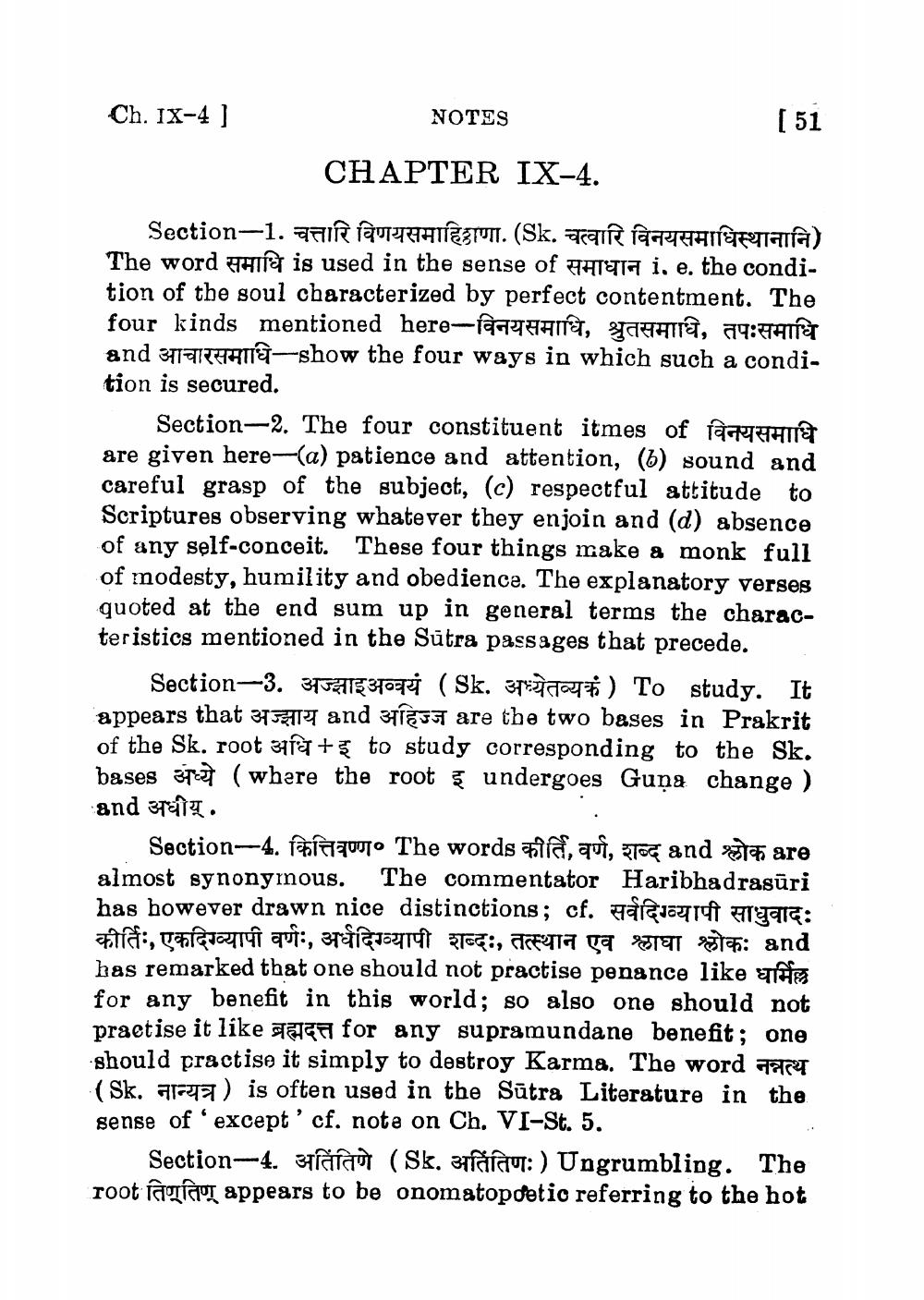________________
Ch. IX-4 ]
NOTES
[51
CHAPTER IX-4.
Section-1. aTilUrTAHIESTUIT. (Sk. Taip laat ATTESTATA) The word V is used in the sense of h a i. e. the condition of the soul characterized by perfect contentment. The four kinds mentioned here- hai, xatirêt, aq: TATTI and 3477ITUATE-show the four ways in which such a condition is secured.
Section-2. The four constituent itmes of all are given here-(a) patience and attention, (b) sound and careful grasp of the subject, (c) respectful attitude to Scriptures observing whatever they enjoin and (d) absence of any self-conceit. These four things make a monk full of modesty, humility and obedience. The explanatory verses quoted at the end sum up in general terms the characteristics mentioned in the Sūtra passages that precede.
Section-3. TFZLE 3 Topi (Sk. 37 ) To study. It appears that 37517 and 3TIEF are the two bases in Prakrit of the Sk. root 371 +5 to study corresponding to the Sk. bases 377 (where the root & undergoes Guņa change ) and staid.
Section-4. कित्तिवण्ण. The words कीर्ति, वर्ण, शब्द and श्लोक are almost synonymous. The commentator Haribhadrasūri has however drawn nice distinctions; cf. qaragauti : कीर्तिः, एकदिग्व्यापी वर्णः, अर्धदिग्व्यापी शब्दः, तत्स्थान एव श्लाघा श्लोकः and has remarked that one should not practise penance like it for any benefit in this world; so also one should not praetise it like taga for any supramundane benefit; one should practise it simply to destroy Karma. The word TRY (Sk. arata) is often used in the Sūtra Literature in the sense of 'except' cf. note on Ch. VI-St. 5.
Section-4. Tala (Sk3fafaut:) Ungrumbling. The Toot TifaT appears to be onomatopoetio referring to the hot




